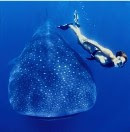Mozambique
Situated on Africa's East Coast, Mozambique is a country of endless pristine palm-fringed beaches and superb, largely untouched dive sites. The exotic Portuguese-influenced culture and warm, friendly people make for a heady mix of culinary cultural experiences, not to mention undiscovered natural wonders just waiting for your visit.
Before 1975, Mozambique was a hugely popular tourism destination for Southern Africa and international visitors. A seventeen year long civil war then broke out, which finally came to an end in 1992, with the first democratic elections held in 1994. The people of Mozambique are now hard at work rebuilding their beautiful country. Their passion is evident in every greeting smile.
The Republic of Mozambique stretches for 2 504 kilometres along the southeastern coast of Africa, facing the Indian Ocean and occupies 799 384 square kilometres.
The countries northern border is the Rovuma River, which separates Mozambique from Tanzania. The countries bordering Mozambique to the east are Zambia, Zimbabwe, South Africa and Swaziland.
Nearly half of all the land in Mozambique is low lying.and as many as sixty rivers crisscross the country as they head for the Indian Ocean. Amongst these rivers are the mighty Zambezi which effectively divides the country in half, forming a natural barrier to travel between southern and northern Mozambique.
The temperature range between day and night is not extreme.
Summer can be very hot although not too humid due to a generally low rainfall.
Winter is very pleasant and a light jersey may be required in the evenings. The winter days are also a lot shorter. Sea temperatures vary between 22 degrees centigrade in winter to 29 in summer.
The tropical climate has two seasons – dry and wet. The wet season is from October to March and the dry season lasts from April to November. More than 80% of the entire years rain falls during the wet season. Most areas receive between 120 – 200 cm of rainfall. The average annual rainfall is greatest over the western hills and the central areas, and lowest in the southwest. Drought is frequent, especially in the south. Temperatures range from 20 c in July to 29 c in January.
About half of the land is covered with forests, scrub and woodland. The wet regions support thick forests and the drier interior supports only a thin savanna vegetation. Mangroves and coconut palms are common along the coast.
Medical advice: Bring any medicines you might need. There are not many medical facilities outside of Maputo. When out and about, avoid buying or eating food that has not been peeled, washed and boiled.
Malaria:Resorts have a weekly malaria spraying programme. All the rooms are also equipped with mosquito nets and we provide mosquito repellent in the rooms. However we recommend that you take precautionary measures before going into a malaria area. Consult your medical practitioner.
Vaccinations: Consult your doctor about possible vaccinations.
Visa requirements: All visitors should be in possession of a valid passport and should check with their consulate for the most up-to-date information.
What to pack: Light-weight clothes (shorts, t-shirts, sun dresses), swimming costumes, towels, a sweater, hat, sunblock, lip cream, insect repellent, binoculars, camera and sunglasses.
Sunday, May 11, 2008
Subscribe to:
Posts (Atom)
